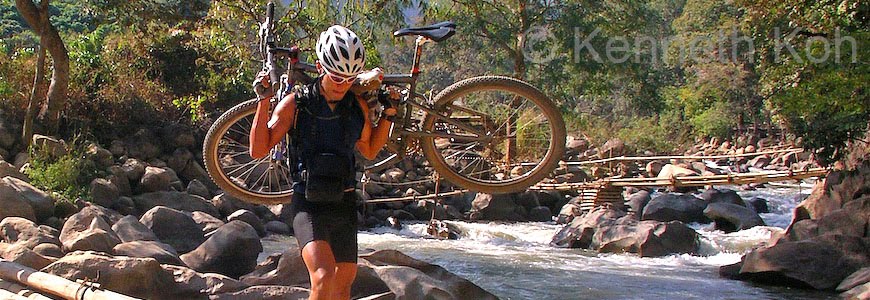The past six months of my life have been something of a black hole, sucked up by a mountain bike race in South Africa called the Cape Epic. During the three months leading up to the race, I biked an average of 1000km a month, climbing over 37,000m... and it still wasn't enough. I failed to complete the race with my teammate.
It wasn't a total loss. I learned a lot too. Still photography is difficult to do on a bike, and even more difficult to involve a viewer in the action. But strapping on a small video camera to capture moving footage on a bike is relatively easy to do and easy to involve the viewer, and I so began the process of learning how to shoot video.
 |
| GoPro HD Hero |
I bought myself a
GoPro HD Hero 
camera with various clips and attachments, and a
Panasonic Lumix DMC-GH2 with 14-140mm kit lens
, a
Panasonic 7-14mm f/4.0 wide angle zoom
, and a
Panasonic LUMIX G 20mm f/1.7 Pancake Lens
. I also bought Final Cut Pro X, and along the way, learned that the iPhone 4s makes a pretty good video camera ;o)
Since my Cape Epic race was a bust, I thought I'd show you a couple of my training trips, and share a little of what I've learned about shooting video on a bike. Keep in mind I'm still learning this stuff, so if you've got some feedback for me, I'd love to hear it.
 |
| Olloclip Quick-Connect Lens with Glif Tripod Mount |
Here's an early trip in December last year. I shot this entirely on my iPhone 4s and edited the footage on FCP X. Since then, I learned that the iPhone makes an excellent bike touring camera. With IOS 5.0, you can turn on the camera and shoot one handed. It's not really wide enough when shooting video as the iPhone crops down a bit, perhaps because of the image stabilizer. I'll probably buy the
Olloclip Quick-Connect Lens Solution, which gives you 3 lenses in one - fisheye, wide-angle and macro lenses. I probably also pick up the
Glif Tripod Mount
which I can use with a small
Joby Gorillapod
.
This second video is from a trip to Northern Thailand in March this year. I had learned a little more. Compare this video to another from an earlier trip to Thailand in February
Here. In this one, I've incorporated a greater variety of shots and blended them better into the action.
There are many places you can mount a GoPro. I tried to incorporate a variety into the final production. In this video, I shot from my helmet, forwards and backwards, used the Chest Harness, shot from under the down tube and from the handlebars. If I have a preference, it is to shoot mainly from the helmet. It collects less dust and water that way, and can be slightly more stable than from the handlebars, and can be changed quickly to face either forwards or backwards. Also, If you need to handhold the camera, it is easier to remove your helmet and shoot holding your helmet with the camera on top than it is to unscrew the GoPro from the handlebar mount. Putting your helmet with camera on top also makes a good impromptu tripod. Because I can't see what I'm shooting, I generally shoot in 4:3 mode (960p Tall Mode r4) and then crop to 16:9 if possible during post-processing.
Here's what I would do more of in future:
1. More pre-planning;
2. Use copyright free music;
3. Steadier shots with a tripod;
4. Clean the camera lens more often;
5. Risk more - attach the camera lower on the bike to show wheels, or derailleur.

